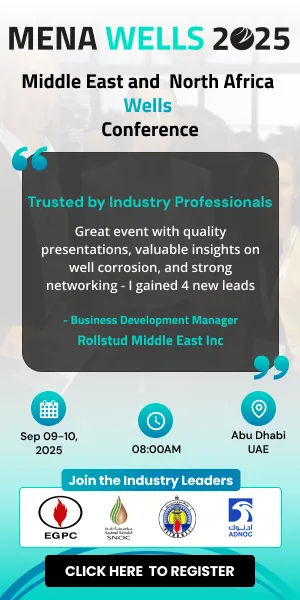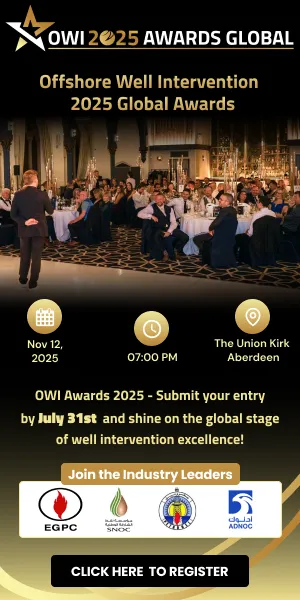Many Industry experts have long recognised the potential that polymer materials can offer in pipeline applications, but the promise has often lagged behind the progress. That may now be about to change.p style="margin-bottom: 0cm;">Many Industry experts have long recognised the potential that polymer materials can offer in pipeline applications, but the promise has often lagged behind the progress. That may now be about to change.
AFTER JUST TEN months in business, Swagelining Ltd’s team of experienced and visionary pipeline professionals has invested more than US$3.2mn to help accomplish their mission to take polymer lining technology into the pipeline mainstream – and it’s beginning to cause a stir on a number of projects around the world.
Providing a highly effective solution for the prevention and control of internal corrosion and erosion in pipelines while delivering substantial cost, efficiency and environmental benefits, the company’s Integrated Lining System is showing prospects for changing the way pipelines are built, operated and rehabilitated.
Background
Originally developed by British Gas and United Utilities in the 1980s, Swagelining™ technology was initially designed as a trenchless technology rehabilitation solution providing an effective method of overcoming the problem of failing pipes in inaccessible or inconvenient areas, such as beneath busy main streets. This technology was further developed in the 1990s for the protection of new pipelines in the subsea industry complemented by a new connection system the WeldLink™, for use in high pressure, carbon steel, water injection applications.
In November 2009, Glasgow-based Swagelining Ltd acquired the intellectual property rights to the established Swagelining™ technology. With the belief that the technology was yet to realise its promise despite its acknowledged track record, Swagelining Ltd wanted to push the boundaries of the technology to extend its benefits from niche application to wider use in the pipeline industry globally.
How it works
The Swagelining™ system is suitable for inserting liners in pipelines up to 60” diameter for structural and non structural applications. It works by installing a tight-fitting polymer liner into new or existing pipelines, by designing and constructing a liner which has an outside diameter slightly larger than the inside diameter of the pipe to be lined. The aim is to maximise pulling lengths which in turn leads to reduced numbers of connections and excavations. Single pull lengths of up to 1km have been achieved.
The Swagelining™ technique uses a naturally reverting recovery system after installation. The liner is installed into a host pipe by pulling it through a reduction die using a winch, which temporarily reduces its diameter allowing easy installation. Once pulled completely through the pipe, the pulling force is removed and the liner returns to its original diameter pressing tightly against the inside wall of the host pipe. The tight fitting polymer liner results in a flow capacity close to that of the original pipeline.
The naturally small footprint of the component parts of Swagelining™ equipment also allows the technology to be considered for projects where working space is at a premium such as busy urban locations.
The technology today
After closely examining the way the industry considers the use of polymer lining in various sectors, the team at Swagelining focused on the development of a complete system for polymer lining. Convinced that the wider use of the technology was being restrained by the inability to address a wide range of technical challenges in a co-ordinated manner, Swagelining has developed the concept of the Integrated Lining System. This concept brings together liner design, material selection, project management, insertion technology, supply of connectors and terminations, and venting technology. The intention is to become the leading polymer liner solution provider – in all pipeline applications.
Reflecting its global intentions, the Swagelining business model focuses on local delivery of its technology. Its goals are simple – transfer industry leading technology, train in-country resources and ensure the local business community participates fully in its lining projects. The Swagelining Ltd Partnership Plan enables pipeline owners and operators, designers and contractors to engage the technology in the most appropriate way to realise local benefits of employment and skills development. The Integrated Lining System can now be applied to a number of sectors, including gas, potable water, sewage, water injection, crude oil, mining slurry, cement and chemicals. As many of these projects are in areas where employment is scarce, the company considers local involvement to be as important as its global technology.
The company uses a bespoke designed software prediction package as a foundation that supports lining system designs to be tailored for clients. The software enables the optimum liner size to be selected to achieve maximum pull length whilst not compromising on the pipeline volume capacity.
The venting of permeated annular gas has for some time been recognised as a challenge on hydrocarbon systems. To overcome this, the company has incorporated its LinerVent™ technology into the Integrated Lining System. This pioneering annular venting technology enables the polymer lining of hydrocarbon pipelines, allowing safe venting of any build up of annular gas which may have occurred, back into the pipeline. There is no requirement for venting of toxic or environmentally harmful gas outside the pipeline system.
Swagelining also leads the way in terms of connector technology. With a range of connectors available for a range of applications and industries, the company manages its connector technology into two groups – flanged or fully welded connectors. Among these is the pipeline industry’s most successful welded connector; the WeldLink® for welded steel applications. This well proven system was designed to complement Swagelining™ and has seen service to 340 bar to date with future testing over 400 bar scheduled.
Independent report confirms economics
A recent independent report by industry experts Atkins Boreas, one of the UKs largest engineering and design consultancies, has concluded that subsea pipelines lined using Swagelining technology with informed material selection and applied venting solutions could save operators tens of millions of dollars in CAPEX alone.
The study found that a Swagelining™ polyvinylidene fluoride (PVDF) liner results in a 25 per cent saving against operators’ main alternative, super duplex. This equates to a significant US$7.6mn in a test case based on a 10 km x 10” diameter stretch of pipeline. Comparisons between a PVDF lined system and a metallurgically bonded CRA/carbon steel system estimated even greater savings approaching 50 per cent.
It also highlighted that in lower temperature pipelines where a polyethylene (PE) liner can be used, a 60 per cent saving can be made over the cost of super duplex, representing a further substantial saving of US$11.1mn for a 10 km pipeline.
For water injection applications, the report also concluded that polymer liners present opportunities for increased return on investment. The improved hydraulic performance of lined pipe means more water can be injected and therefore oil recovered is increased in a given period of time. A further bonus to the operator of using lined pipe in water injection applications is that the pipe is more energy efficient than corroded carbon steel. The energy saved can be spent on pumping more water and enhancing recovery. In the study increases of 4 per cent in the amount of water injected were indicated from power savings alone or a reduction in operating costs equivalent to $1.9mn per annum.





